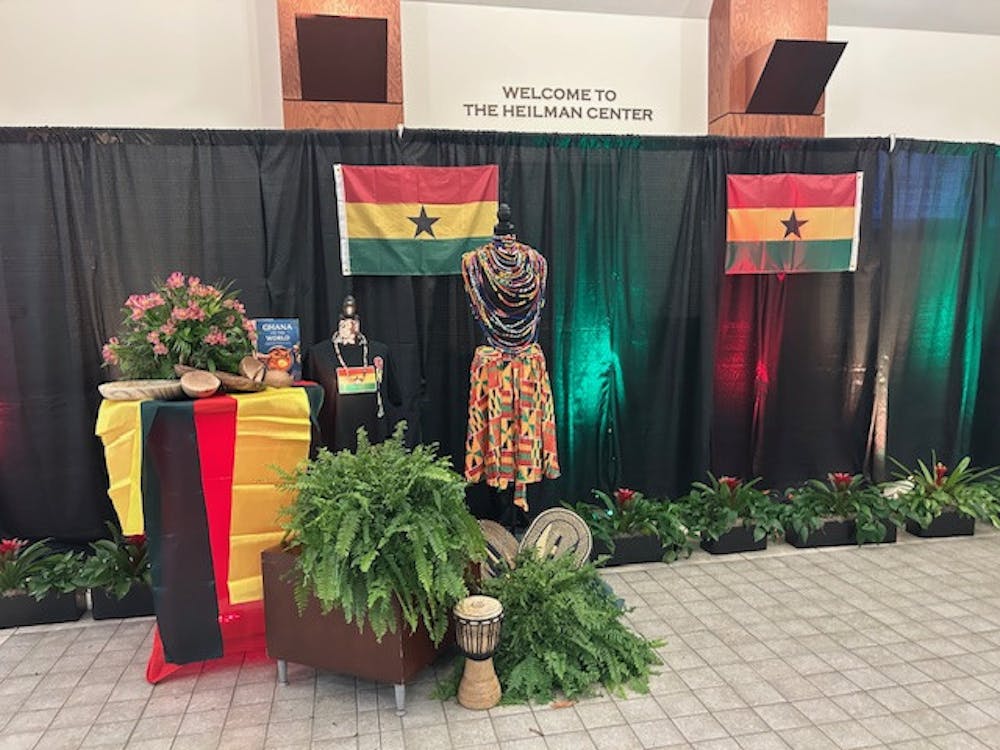Beams, laboratories and nuclear detectors are something out of a sci-fi movie, but for Jerry Gilfoyle, a University of Richmond physics professor, and the students he employs, it is just another day at work.
This summer, Gilfoyle received a grant renewal of $89,000 from the U.S. Department of Energy to continue his nuclear energy research. The grant is part of almost $2 million he has been awarded to help fund his research, according to a release sent by the university. Part of the grant will allow for a master's student from the University of Surrey in the United Kingdom to join the research team as part of a joint program with Richmond.
Gilfoyle's research is focused on "the unknown structures of protons, neutrons and the atomic nuclei," he said. Specifically, he is "making measurements to challenge the theory of quantum chromodynamics (QCD)," which explains the force that binds together quarks, he said. Quarks are the particles that make up protons and neutrons, which together make up the nucleus of an atom.
The research done at the Thomas Jefferson National Accelerator Facility in Newport News, Va., and funded by the U.S. Department of Energy, is a global center for both experiment and theory. Both sides work together to discover more about this QCD force that binds quarks together, he said.
"That force is extremely powerful and sort of poorly understood," he said. "And how that binding occurs, we sort of know it at kind of a qualitative level, but don't have a quantitative theory that can calculate things that we can go out and measure. And trying to understand that force is the main mission of my research and the research at Jefferson lab."
This past summer, Gilfoyle worked with Richmond students Spencer Bialt, Liam Murray and Keegan Sherman.
The students are helping Gilfoyle and his fellow researchers "to build a new particle detector at JLab to take advantage of an upgraded electron accelerator now under construction," he said. The electron beam energy will be doubled from 6GeV to 12GeV, Sherman said. This will allow higher energy experiments to be run at the facility, and thus allow for deeper exploration of the nucleus, he said.
The electron beam accelerator, which cost almost half a billion dollars to build, is used to examine this QCD force, Gilfoyle said. The beam "consists of electrons that penetrate and scatter from the quarks inside a stationary, nuclear target," Gilfoyle said. It is similar to the function of an electron microscope, he said. The higher energy this beam is, the deeper into a target one can see.
"You need that in order to image very small things, and what we are trying is to image the interior of the proton and neutron and the nuclei," Gilfoyle said. "So by doubling the beam energy, we are going to be able to peer more deeply into the structure of the proton and neutron."
Sherman, a sophomore majoring in math, physics and computer science, has worked with Gilfoyle since he was a junior in high school. His father works at the university and put him in contact with Gilfoyle, he said.
"He's very knowledgeable on the subject, which is great," Sherman said.
Sherman has been writing code to create a simulation of how the detector should work after completion. Bialt had been completing data from the beam before it was shut down for the upgrade, and Murray has been working on getting the simulation to run on new technologies to increase the simulation speed, Sherman said.
Enjoy what you're reading?
Signup for our newsletter
This gives them training and an opportunity to see what life is like, really at the frontiers of science," he said.
One way students present their work and research with Gilfoyle is through the creation of posters that students then present at national meetings.
Students who have worked with Gilfoyle have followed a variety of paths from going to graduate school for physics to going on to work for finance companies, he said.
Within the physics department, all the faculty have external support, like Gilfoyle's grant, ranging from quarks up to the Big Bang theory, Gilfoyle said.
"I think that's probably unique in the university, in the history of the university, to have a department that is all externally funded," he said.
Contact staff writer Maria Rajtik at maria.rajtik@richmond.edu
Support independent student media
You can make a tax-deductible donation by clicking the button below, which takes you to our secure PayPal account. The page is set up to receive contributions in whatever amount you designate. We look forward to using the money we raise to further our mission of providing honest and accurate information to students, faculty, staff, alumni and others in the general public.
Donate Now


